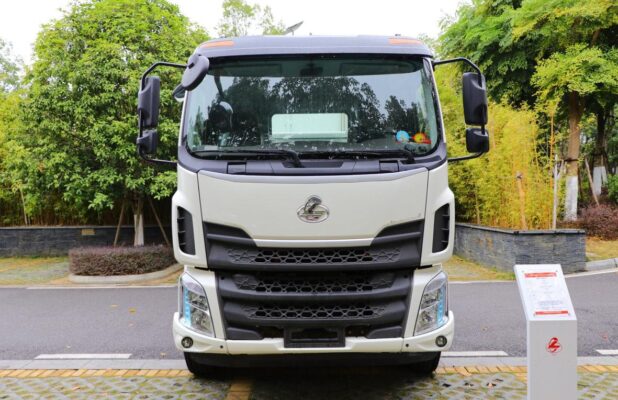Electric Truck News
Why Do People Like Electric Vehicles Now?
Electric vehicles (EVs) are becoming an increasingly popular mode of transportation, with more and more people opting for them. The reasons behind the growing popularity of electric vehicles are diverse, ranging from environmental benefits to technological advancements and economic advantages. In this article, we will explore the key reasons why electric vehicles are now widely favored and what makes them an appealing choice for consumers.
1. Why Do People Like Electric Vehicles Now?
There are several important factors contributing to the rise in popularity of electric vehicles. As society becomes more conscious of environmental issues, technological advancements in the automotive industry have made EVs an attractive alternative to traditional vehicles. Here are the main reasons why people are choosing electric vehicles today:
1.1 Environmental Benefits
One of the most compelling reasons people choose electric vehicles is the environmental benefits they offer. Electric vehicles are inherently eco-friendly because they produce zero emissions. Unlike conventional gasoline or diesel vehicles, which emit harmful pollutants such as carbon dioxide (CO2), nitrogen oxides (NOx), and particulate matter, electric vehicles do not generate exhaust gases. This helps reduce air pollution, especially in densely populated urban areas.
Reducing carbon emissions is crucial in addressing climate change, and electric vehicles play an essential role in this effort. As more electric vehicles are adopted, the reduction in harmful emissions helps improve air quality, contributing to better public health and mitigating global warming. Furthermore, when electric vehicles are charged using renewable energy sources such as solar, wind, or hydropower, their environmental footprint becomes even smaller, reinforcing their positive impact on the planet.
1.2 Lower Operating Costs
Electric vehicles also tend to have lower operating costs compared to traditional internal combustion engine (ICE) vehicles. The cost of electricity is generally lower than the cost of gasoline or diesel, making it more economical to fuel an electric vehicle. In addition, electric vehicles have fewer moving parts than traditional vehicles, meaning they require less maintenance. EVs do not have components like an internal combustion engine, transmission, or exhaust system, all of which need regular upkeep and are prone to wear and tear.
With fewer mechanical parts, electric vehicles are less likely to require costly repairs. Me kena ivakaraitaki, electric motors typically last longer than conventional engines, and since EVs often employ regenerative braking, the brake systems tend to wear out more slowly. This results in lower long-term maintenance costs for electric vehicle owners.
Kena ikuri,, many regions offer free or low-cost charging infrastructure, making it even more economical for drivers to charge their EVs. As the charging network continues to expand, the convenience and affordability of charging an electric vehicle will increase, further enhancing its appeal.
1.3 Technological Advancements and Improved Driving Range
Over the past decade, advancements in electric vehicle technology have significantly improved their range and performance. One of the key concerns for potential EV buyers in the past was the limited driving range of electric vehicles. Early models of electric cars could only travel short distances on a single charge, making them less suitable for long trips.
Ia, today’s electric vehicles have seen major improvements in battery technology. Many modern EVs now offer ranges of 250-370 miles (400-600 kilomita) on a full charge, with some high-end models reaching over 400 miles (640 kilomita) per charge. This makes electric vehicles much more practical for daily driving, including long commutes and weekend trips.
Kena ikuri,, advancements in charging technology have made it possible for electric vehicles to charge more quickly. Fast-charging stations are now available in many urban areas, and some electric vehicles can charge up to 80% of their battery capacity in just 30 minutes. With the expansion of both fast-charging infrastructure and battery technology, long-distance travel is becoming more feasible for electric vehicle owners.
1.4 Government Incentives and Support
Governments around the world are actively promoting the adoption of electric vehicles by offering a range of incentives and subsidies. These include tax credits, rebates, reduced registration fees, and other financial incentives that help lower the cost of purchasing an electric vehicle. In many regions, EV buyers can receive significant financial benefits that make the initial purchase price of an electric vehicle more affordable.
In addition to financial incentives, governments are investing in the development of EV infrastructure, including the installation of more charging stations and the implementation of policies to encourage the widespread adoption of electric mobility. These policies and initiatives are helping to make electric vehicles more accessible to a broader range of consumers.
2. Is Charging an Electric Vehicle Really That Difficult?
Charging an electric vehicle is one of the key factors that potential buyers consider when deciding whether to make the switch from a traditional gasoline-powered car. In the past, charging infrastructure was limited, and the time it took to recharge an electric vehicle could be inconvenient for drivers. Ia, as technology has advanced, charging an electric vehicle has become increasingly convenient.
2.1 Improvement in Charging Infrastructure
Over the last few years, the charging infrastructure for electric vehicles has expanded dramatically. More and more charging stations have been installed in cities, highways, and public spaces, making it easier to find a place to charge your EV. Additionally, many EV owners are now able to install home charging stations, allowing them to charge their vehicles overnight in the comfort of their own garages. This convenience has significantly improved the practicality of owning an electric vehicle.
Some electric vehicles also support fast-charging technology, which allows the battery to be charged quickly in just a short period. Fast-charging stations are being installed at key locations such as shopping malls, office parks, and highway rest areas, making it easier to recharge an electric vehicle during long trips.
Although it still takes longer to charge an electric vehicle compared to refueling a gasoline car, the development of fast-charging stations and the increasing availability of charging locations means that charging is becoming much more convenient.
2.2 Home Charging Solutions
For many electric vehicle owners, the ability to charge their car at home is a major advantage. Installing a home charging station allows drivers to charge their vehicle overnight, meaning they can start each day with a full battery. In addition to reducing the time spent waiting for a charge, home charging eliminates the need to visit public charging stations regularly.
As home charging solutions become more widespread and affordable, the convenience of owning an electric vehicle will continue to improve. Many car manufacturers now include home charging equipment as part of the package, making it easier for consumers to switch to electric mobility.
3. Is the Driving Range of Electric Vehicles Sufficient for Most People?
The driving range of electric vehicles has been a major consideration for many consumers, especially for those who need to travel long distances on a regular basis. Early electric vehicle models often had limited range, making them unsuitable for extended road trips. Ia, technological advancements have significantly improved the range of modern electric vehicles.
3.1 Improved Battery Technology
With improvements in battery technology, the range of electric vehicles has increased dramatically. Many of the latest electric cars offer ranges of over 200 miles (320 kilomita) on a full charge, with some premium models providing ranges well over 300 miles (480 kilomita). These extended ranges are more than sufficient for the vast majority of daily commuters, as most people drive fewer than 50 miles (80 kilomita) per day on average.
3.2 Long-Distance Travel and Charging Stations
While range is still a concern for some long-distance drivers, the growing network of charging stations is helping to alleviate this issue. As more fast-charging stations are installed along major highways and in rural areas, the ability to take long road trips in an electric vehicle is becoming more feasible. Additionally, the implementation of range-extending technologies, such as regenerative braking and energy-efficient motors, further enhances the range of electric vehicles.
For drivers who need to travel longer distances, planning routes and knowing where the nearest charging stations are located is becoming easier, thanks to various apps and mapping tools. As the charging network continues to expand, range anxiety will become a less significant concern for most electric vehicle owners.
4. Is the Price of Electric Vehicles Too High?
One of the main challenges to the widespread adoption of electric vehicles has been the higher upfront cost compared to traditional gasoline-powered cars. Ia, the cost of electric vehicles has been steadily decreasing as battery technology improves and manufacturing processes become more efficient.
4.1 Decreasing Purchase Price
While electric vehicles still tend to have a higher initial purchase price than conventional cars, the price gap is narrowing. As more manufacturers enter the electric vehicle market, competition is driving prices down, and many EV models are now available at a more affordable price. Additionally, government subsidies and tax incentives help offset the higher upfront cost, making electric vehicles more accessible to a broader range of consumers.
4.2 Lower Operating and Maintenance Costs
Despite the higher initial cost, electric vehicles can be more economical in the long run due to their lower operating and maintenance costs. Charging an EV is typically much cheaper than refueling a gasoline-powered car, and maintenance costs are generally lower because electric vehicles have fewer moving parts that require maintenance or replacement. Over time, the savings on fuel and maintenance can offset the higher purchase price, making electric vehicles a more cost-effective option in the long term.
Additionally, as battery prices continue to fall and economies of scale are realized, the price of electric vehicles will likely continue to decrease, making them more affordable for a wider range of consumers.
5. Conclusion: Why Do People Love Electric Vehicles Now?
The increasing popularity of electric vehicles is the result of a combination of factors that make them an appealing choice for modern consumers. From their environmental benefits, such as reduced emissions and improved air quality, to their lower operating and maintenance costs, electric vehicles offer numerous advantages over traditional gasoline-powered cars. Technological advancements in battery capacity and charging infrastructure have made EVs more practical and convenient, and government incentives are making them more affordable.
While challenges such as range limitations and higher initial costs remain, the ongoing progress in electric vehicle technology and the expansion of the charging network are addressing these concerns. As more people become aware of the benefits of electric vehicles, the demand for EVs will continue to grow, helping to drive the transition to a more sustainable, eco-friendly transportation system.
Electric vehicles are no longer just an alternative; they are rapidly becoming the preferred mode of transportation for people who want to reduce their environmental impact, save on operating costs, and enjoy the latest in automotive technology. With continuous improvements and greater availability, electric vehicles are set to become the dominant choice for drivers in the coming decades.





